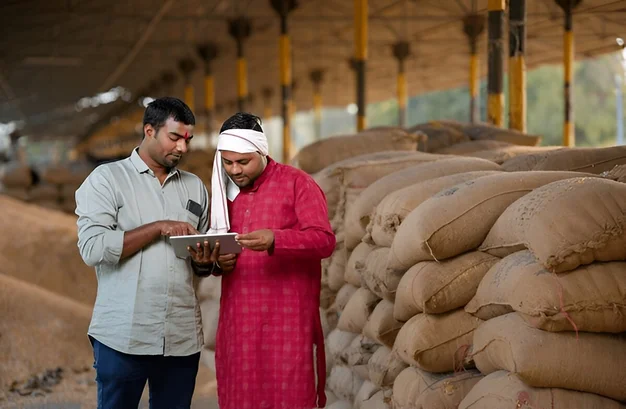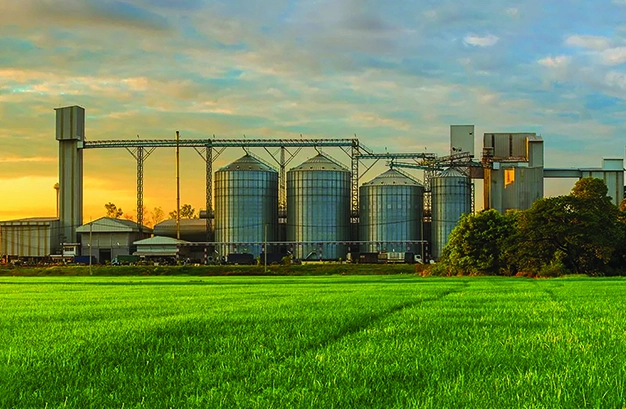Imagine you’re a farmer with a warehouse full of crops. You need money now, but the market price isn’t great, and selling might not be the best option. What if there was a way to access funds without selling off your goods? That’s where warehouse receipt financing comes in. By using your stored crops as collateral, you can get access to the money you need right away. It’s like turning your inventory into cash, without the pressure to sell. Let’s take a closer look at how this financing option can benefit farmers and agri-traders
Warehouse receipt financing is revolutionizing the way farmers and agri-traders manage cash flow and operational risks. By using stored commodities as collateral, this financing solution turns passive agricultural products into active assets. This helps optimize farm operations and also ensures that agri-businesses can secure the required funds at competitive rates. With the growing demand for loans against agri commodities and agri-commodity finance, warehouse receipt financing is rapidly becoming a cornerstone in modern agricultural finance.
What is Warehouse Receipt Financing?
Warehouse receipt financing is a type of financial arrangement in which a commodity in storage acts as collateral for a loan. The process works like this:
- Storage as Security: Farmers or agri-traders deposit their commodities in certified warehouses. In return, they receive a warehouse receipt, a document certifying the stored goods’ type, quantity, and quality.
- Loan Against Warehouse Receipt: These receipts can be presented to banks or financial institutions as collateral to secure a warehouse receipt loan.
- Negotiable and Electronic Options: Modern advancements have paved the way for negotiable warehouse receipts and electronic warehouse receipts, making the process faster, more secure, and easier to transfer or trade.
This system not only ensures that the stored commodities are secure but also provides lenders with a reliable and transparent way to access the collateral value.
Features and Benefits of Warehouse Receipt Financing
For Farmers and Agri-Traders
- Increased Liquidity: By converting stored commodities into financial assets, farmers gain immediate access to credits, ensuring that operational expenses and investments are managed seamlessly.
- Risk Mitigation: Warehouse receipt financing reduces the risk of price volatility. Farmers can store their produce until the market conditions become favorable and are not burdened with unsold inventory.
- Improved Credit Access: Small farmers and agri traders can also secure loans at competitive interest rates by providing tangible collateral.
- Efficient Capital Utilization: The system allows for effective capital recycling, ensuring that money is available when needed without prematurely selling commodities.
For Banks and Financial Institutions
- Lower Default Risks: Loans backed by verifiable physical assets reduce the credit risk associated with unsecured lending.
- Transparent Valuation: Certified warehouses and standardized receipts ensure that the collateral is valued accurately, facilitating easy loan disbursement processes.
- Market Expansion: By offering warehouse receipt loans, banks can tap into a larger segment of the agricultural market, thereby broadening their customer base.
- Enhanced Portfolio Security: The dual benefit of physical and digital verification (via electronic warehouse receipts) adds an extra layer of security and efficiency to the loan process.

Who is Eligible for the Warehouse Receipt Loan?
In the eligibility for warehouse receipt financing, we have a lot of people:
- Farmers and Agribusinesses: Individuals or entities engaged in farming who have stored goods in certain kinds of warehouses.
- Agri-Traders and Cooperatives: Organizations involved in the purchase and sale of high volumes of agri commodities, if capable of presenting a valid warehouse receipt or electronic warehouse receipt.
- Registered Producers: Those with proper documents that show ownership and prove that the commodities meet the quality standards as per the warehouse certification.
Financial Institutions usually work with agricultural cooperatives and government programs to make the eligibility criteria less rigid, so that the benefits of agri financing go to as many shareholders as possible.
Eligible Commodities for Warehouse Receipt Financing
Ultimately, not all agricultural commodities are eligible for warehouse receipt financing.
- Cereal grains- maize, wheat, rice, barley etc.
- Pulses and legumes- lentils, beans, peas.
- Oilseeds- soybean, sunflower, rapeseed.
- Horticultural products- fruits and vegetables of non-perishable nature or preserved by other means.
- Other agri-commodities- have met the quality standards and conditioned storage provided by certified warehouses.
The choice of the above commodities was made with the consideration of their market stability, and storage has unearthed security and liquidity in investment able to benefit lenders and borrowers equally.
Conclusion
Warehouse receipt financing stands out as a transformative tool in the realm of agricultural finance. By turning stored commodities into liquid assets, this financial model provides farmers and agri-traders with the flexibility to manage cash flow, mitigate risks, and take advantage of market opportunities. Whether you’re looking to secure a loan against warehouse receipt or explore electronic warehouse receipt solutions, this innovative approach promises a more secure and profitable future for the agricultural community.
Embracing warehouse receipt financing could very well be the key to unlocking a new era of growth and sustainability in the agricultural sector. Stay ahead of the curve and explore how this financing model can empower your agri-business today!




